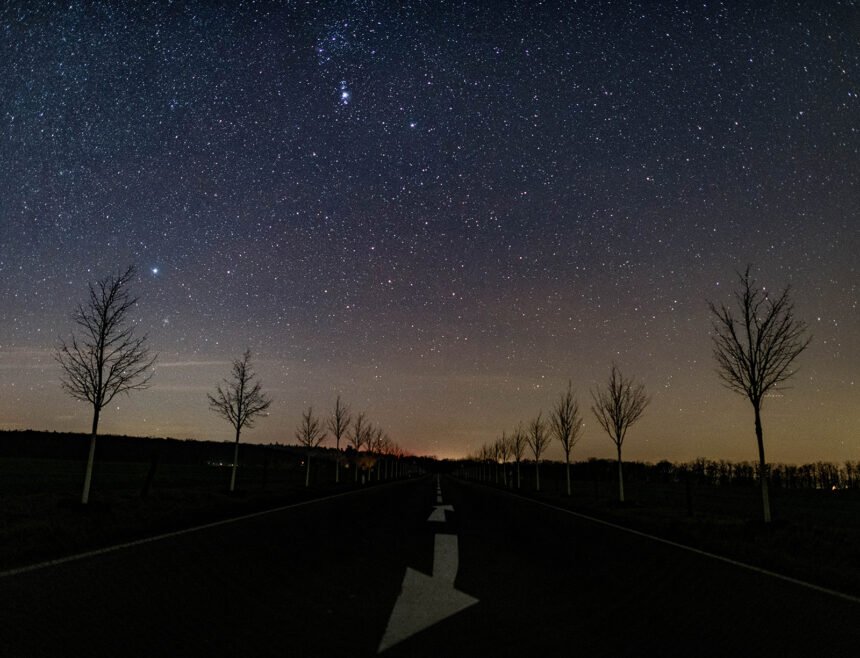Quadrantid meteor shower peaks this weekend and other celestial events in 2021

The new year begins with the peak of the Quadrantid meteor shower on Saturday evening into early Sunday. While it may be one of the strongest meteor showers of the year, a bright waning gibbous moon will likely limit the amount of meteors visible.
It’s also notoriously hard to observe due to January’s difficult weather and the short peak — just about six hours. It will be best seen in the Northern Hemisphere between 2 a.m. local time and dawn.
Between 50 and 100 meteors are typically visible per hour, especially in rural areas. While the bright moon will reduce this number, you may be able to see more meteors if the skies are clear in your area.
Check Time and Date to see what your chances are like, or step outside to take a look for yourself.
How to spot the meteor shower
Watch the northeastern sky and look about halfway up. You may even glimpse some fireballs during the meteor shower. Watch the skies for at least an hour, according to advice from the American Meteor Society.
If the meteor shower’s name sounds odd, it’s probably because it doesn’t sound like it’s related to a constellation, like other meteor showers. That’s because the Quadrantids’ namesake constellation no longer exists — at least, not as a recognized constellation.
The constellation Quadrans Muralis, first observed and noted in 1795 between Bootes and Draco, is no longer included in the International Astronomical Union’s list of modern constellations because it is considered obsolete.
The meteor shower radiates between the Big Dipper and Bootes.
Like the Geminid meteor shower, the Quadrantid comes from a mysterious asteroid or “rock comet,” rather than an icy comet, which is unusual. This particular asteroid is 2003 EH1, which takes 5.52 years to orbit the sun once.
The shower’s short peak is because only a small stream of particles interacts with our atmosphere, and the stream occurs at a perpendicular angle. Each year, Earth passes through this debris trail for a short time.
If you live in an urban area, you may want to drive to a place that isn’t littered with city lights that will obstruct your view. If you’re able to find an area unaffected by light pollution, meteors could be visible every couple of minutes from late evening until dawn.
Find an open area with a wide view of the sky, and don’t forget to bundle up. Make sure you have a chair or blanket so you can look straight up. And give your eyes about 20 to 30 minutes to adjust to the darkness — without looking at your phone — so the meteors will be easier to spot.
Eyes on the sky in 2021
The Quadrantids kick off the first of 12 meteor showers across 2021.
Typical of a normal year, 2021 will also have 12 full moons. (Last year had 13 full moons, two of which were in October).
Here are all of the full moons and their names occurring this year, according to the Farmer’s Almanac:
- January 28 — Wolf moon
- February 27 — Snow moon
- March 28 — Worm moon
- April 26 — Pink moon
- May 26 — Flower moon
- June 24 — Strawberry moon
- July 23 — Buck moon
- August 22 — Sturgeon moon
- September 20 — Harvest moon
- October 20 — Hunter’s moon
- November 19 — Beaver moon
- December 18 — Cold moon
This year, there will be two eclipses of the sun and two eclipses of the moon — and three of these will be visible for some in North America, according to the Old Farmer’s Almanac.
A total eclipse of the moon will occur on May 26, best visible to those in western North America and Hawaii from 4:46 a.m. ET to 9:51 a.m. ET.
An annular eclipse of the sun will happen on June 10, visible in northern and northeastern North America from 4:12 a.m. to 9:11 a.m. ET. The sun won’t be fully blocked by the moon, so be sure to wear eclipse glasses to safely view this event.
November 19 will see a partial eclipse of the moon and skywatchers in North America and Hawaii will see it between 1 a.m. ET and 7:06 a.m. ET.
And the year ends with a total eclipse of the sun on December 4. It won’t be seen in North America, but those in the Falkland Islands, the southern tip of Africa, Antarctica and southeastern Australia will be able to spot it.




